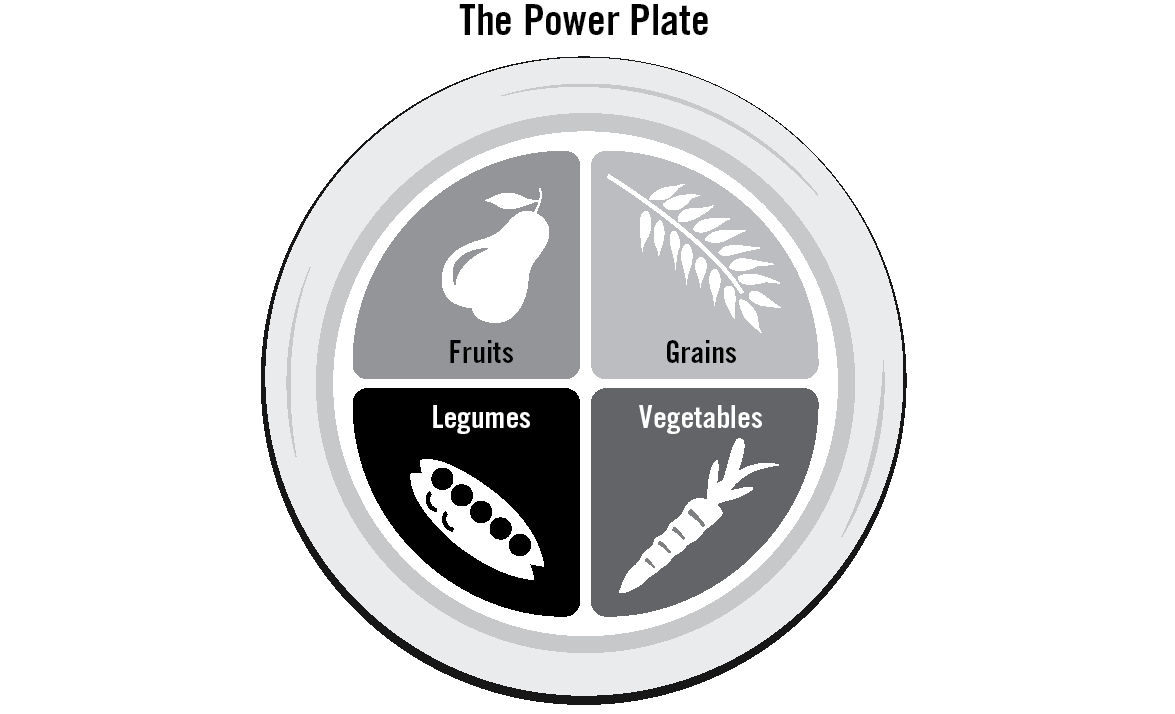 CHAPTER 2
CHAPTER 2 
It’s Really That Easy!
GOING VEGAN IS EASY. IT’S EASIER THAN GOING LOW-CARB or gluten-free. And it’s much easier than quitting smoking or breaking other habits. Because you can eat as much as you want. You are never counting calories or carb grams. Yes, a vegan diet does mean skipping animal products—meat, dairy products, and eggs—but there are plenty of great things to take their place.
There are really only two “rules”:
1. Build your meals from plant-based foods, especially vegetables, fruits, whole grains, and legumes (beans, peas, and lentils).
2. Ensure complete nutrition with a supplement of vitamin B12.
That’s it. Those are the “rules.” Let’s take a closer look.
The first “rule” guides you to replace animal products with the four healthful food groups that are nutrition powerhouses: vegetables, fruits, whole grains, and legumes. These are your palette. In the same way that a master painter combines simple colors to create a masterpiece, our simple four food groups combine to make delicious meals that bring you the best possible health. Let’s look at each food group.
Vegetables. Everyone knows that vegetables are loaded with vitamins and minerals. But that’s just for starters. They are also surprisingly high in protein. Take broccoli. It’s about one-third protein, as a percentage of its calories. Spinach is about 50 percent protein. The amount varies from one vegetable to another, but you get the idea. Bison, horses, elephants, giraffes, and many other animals build their massive musculature entirely from plants.
Instead of making vegetables a mere side dish, put them front and center. And why not have two at a meal, say, a green vegetable and an orange vegetable, like broccoli and sweet potatoes, or spinach and carrots?

Fruits. Fruits are loaded with vitamins, of course. But they are also rich in fiber to tame your appetite, and their natural sugars are surprisingly easy on your blood sugar.
Whole grains. Rice, oats, wheat, corn, quinoa, and the full range of other grains bring you healthful complex carbohydrates for energy and a significant amount of protein. And each grain has a natural fiber coating. Although food manufacturers often remove it to turn brown rice into white rice and whole-grain bread into white bread, you are better off leaving the fiber in place. Not only are grains more flavorful in their original package but fiber is a cancer fighter and keeps your digestion running smoothly.
Legumes. Beans, peas, and lentils bring you protein, iron, calcium, fiber, and healthful complex carbohydrates for energy.
On your plate, vegetables, fruits, legumes, and grains turn into a breakfast of blueberry pancakes with maple syrup, oatmeal with cinnamon and raisins, a breakfast scramble, or veggie sausage. For lunch they transform into split pea soup with a hummus sandwich, hearty chili, or a veggie stir-fry. For dinner these simple food groups make a savory stew, shepherd’s pie, veggie sushi, vegetable pizza, a tasty curry, or thousands of other delicious possibilities.
The second “rule” is to ensure complete nutrition with a supplement of vitamin B12. We’ll cover this in more detail in Chapter 5. For now, it’s important to know that you need B12 for healthy nerves and healthy blood, and that it is not made by either animals or plants. It is made by bacteria. So the bacteria in a cow’s gut make some B12 that ends up in meat and milk. On a vegan diet you’ll need to get B12 either as a supplement (available in all drugstores and natural food stores) or from fortified foods (e.g., B 12-fortified soy milk).
So those are the “rules.” In the next chapter we’ll look at how to get started and we’ll see what delicious masterpieces we can create.
 You may also wish to add some nuts, seeds, or olives. They are low in “bad” fats and cholesterol-free. But I would suggest that you go easy. Even though the fat they hold is much more healthful than animal fats, they are still calorie-dense. More on this in
You may also wish to add some nuts, seeds, or olives. They are low in “bad” fats and cholesterol-free. But I would suggest that you go easy. Even though the fat they hold is much more healthful than animal fats, they are still calorie-dense. More on this in 